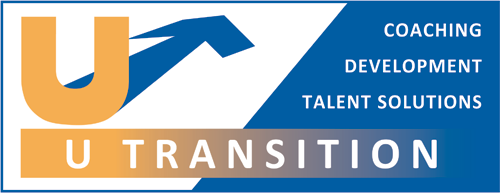
 In my last blog “Empowering Your success”, I wrote about what empowerment means to me and the benefits I believe an empowering approach brings to the leader and the team.
In my last blog “Empowering Your success”, I wrote about what empowerment means to me and the benefits I believe an empowering approach brings to the leader and the team.
In this article I thought I’d share 5 of the strategies I have used to empower the many teams I have led over the years.
The starting point for me is mind set. As a leader you have to decide to how you will lead and the type of leader you want to be.
There is lots written about this and that’s a topic for another day …
As I wrote in my last article, for me, empowering others starts with a mindset and a set of beliefs. Of course an awful lot of this links to your underlying values and the beliefs that you hold to be true. Some of my beliefs that have stood me in good stead are listed below
- everyone is capable of more and being the best version of themselves
- everyone should have the opportunity to excel, to learn, develop and grow
- when we work together we get more success. Collaboration and teamwork are crucial
- trust is the foundation of empowerment
- inclusivity is essential – everyone has unique strengths, skills, experiences and perspectives to offer
- I can’t do it all, and I can’t do everything well, some of my team can do things better than I can….and always will
- I don’t know it all, and never will….and I don’t need to. Some of my team know more than me and that’s ok
- giving and receiving feedback is both invaluable and essential for growth
- mistakes are learning opportunities
- celebrating achievements and milestones is key
- I become a better leader through supporting others’ to succeed
- my team should be able to operate competently and confidently without me
- empowerment is a shared responsibility
- challenge, with the right intent, is healthily and promotes growth
My 5 Key “Go To” Principles to Empowering My Team
Check the foundations are in place
1) Intent: Being clear on my intent is key. Because of the values and beliefs that I hold, my primary goal is to establish a work environment that fosters growth and success for both individuals and teams. When I take charge of a team, I invest considerable time in communication and observation. I listen to the team’s experiences, their ideas on improving efficiency and supporting business progress. While not every suggestion may be feasible, I aim to leverage the team’s expertise to gain quick wins and drive continuous improvement. I set clear expectations for how I operate through team briefings and one-on-one meetings, ensuring alignment with my actions each day. I believe this makes life easier for me and for the team and ultimately contributes to a future focussed business not a stagnant one.
2) Environment, Resources, and Support: I prioritise creating an optimal working environment. This involves ensuring the day-to-day operational systems, processes, routines, and rituals are in place and if not, adapting, implementing and communicating them. Additionally, I ensure that individuals have access to essential resources, including information, training, technology, and support. I also review things like standard operating procedures (SOPs) and assess adherence to processes, routines and rituals to identify areas for improvement and plan in the time to review it thoroughly and regularly. By equipping the team with the necessary tools, knowledge, and skills, I aim to promote self-directedness, accountability, and competence to achieve their (and my) goals.
3) Skill Development: I recognise the significance of development in the areas of knowledge, skills and behaviours and I aim to provide access to both industry specific or technical training and behavioural training workshops and programs, mentoring, coaching, and general opportunities for learning and growth. The power of learning on the job cannot be underestimated and it’s really important to me that there are buddy systems, secondments, projects and line manager coaching etc in place to enhance skills and capabilities on the job. I aim to boost their confidence and ability to tackle challenges. I adopt a coaching approach as my leadership style and utilise a spectrum of tools and techniques to support their development journey.
Now you have the foundations in place, you build on them…
4) The Coach approach: the coach approach is fundamental to my leadership style, as I truly believe it promotes a sense of ownership, autonomy, and accountability among my team members, leading to increased productivity and a supportive work environment. It embodies a powerful mindset and effective leadership tool. Its flexibility allows me to adapt my leadership style to various situations and assess the readiness of my team members for taking on additional responsibilities. It also encourages individuals to have self directed and proactive behaviours in addressing issues and taking responsibility for their actions rather than learned helplessness. Decision-making authority is a cornerstone of this approach. When they are ready, and used in incremental steps to build experience and confidence, I believe in giving individuals the autonomy to make choices and decisions and to take action relating to their work and areas of responsibility. Having control over their work enables them to make meaningful contributions. By doing so, they can take ownership and feel in control of their tasks and outcomes. I find this sense of ownership fosters a stronger commitment to their work. I encourage autonomy and independence, which enables team members to take initiative, innovate, and find their own solutions to challenges. This approach also promotes critical thinking and allows them to develop their problem-solving skills and takes pressure off of me to have the answer to every question. Accountability and recognition are also essential aspects of the coach approach. By holding individuals accountable for their actions and outcomes, I ensure that everyone is responsible for their contributions. Moreover, recognising and rewarding achievements reinforces a positive environment and motivates individuals to consistently perform at their best and reach their full potential.
5) Trust and letting go: For me, trust and letting go are challenging yet essential aspects of empowerment led leadership. It involves trusting others to handle tasks and make decisions without micro-managing or interfering. If your foundations are in place, it will work. Empowerment doesn’t mean abdication; it involves follow-up, feedback, measurement, challenge, stretch and growth. To empower others, I must have faith in their abilities (and my own abilities) and provide opportunities for them to showcase their competence and potential. Trust is the foundation of all meaningful relationships, whether personal or professional. Building trust takes time and it can be easily broken. It involves being dependable, honest, and transparent in our actions and communication and I must have the confidence to recognise when its not working, to step in and to help appropriately.
If you would like to know more about the coach approach and how to apply it in your business then why not book a chemistry call with me here
